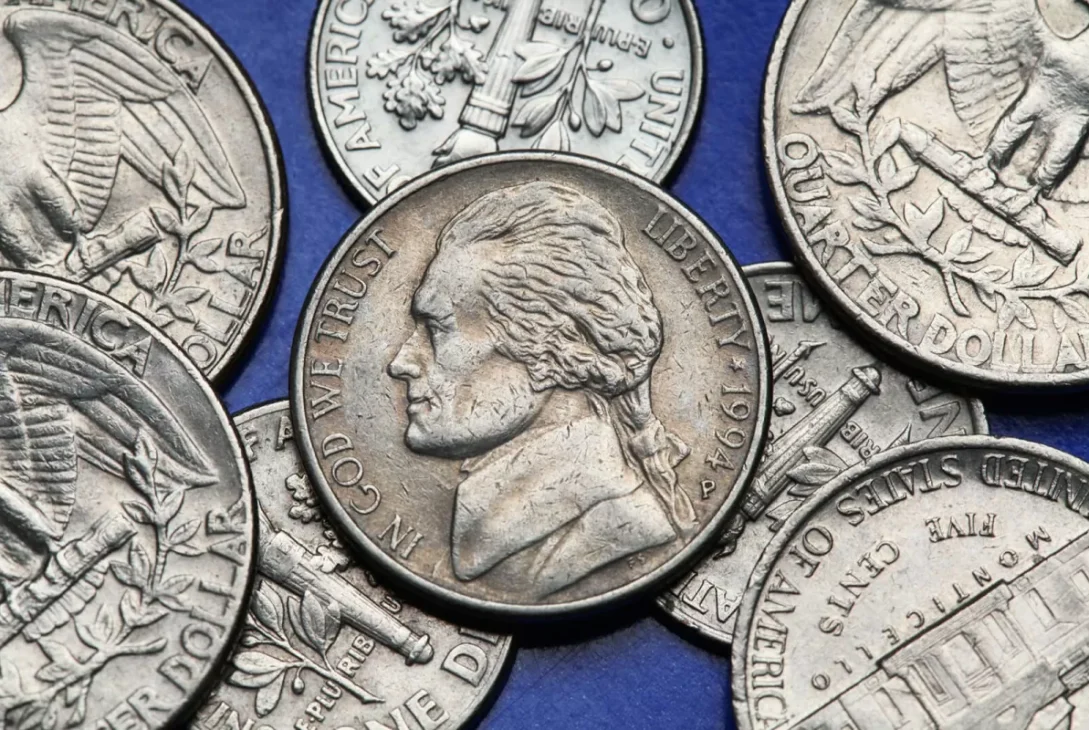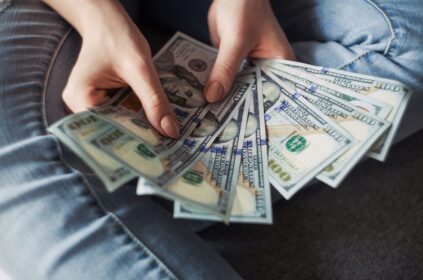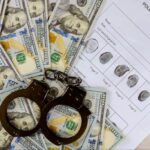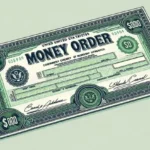Your pocket change or coin jar might hide nickels worth serious money. The legendary 1913 Liberty Head Nickel stands as the most valuable nickel that ever spread through the market, reaching an incredible $4,560,000 at auction. These rare coins exist in just 5 known specimens, making them prized treasures in American numismatics.
Million-dollar coins might be rare, but many valuable nickels still circulate today. The 1918/7-D Buffalo Nickel’s market value has reached $350,750. The rare 1926-S Buffalo Nickel commands up to $322,000, with only 970,000 pieces minted. Jefferson nickels can pack surprising value too. The 1942 Frith Jefferson Nickel sold for $175,000, and the 1939 Doubled Monticello reached $23,500. The World War II era brought interesting changes too. The government needed nickel for the war effort, so they changed the coin’s composition, creating new opportunities for collectors.
This detailed guide shows you how to spot nickels worth money. You’ll learn to identify rare specimens and discover which dates and varieties bring premium prices. The loose change in your pocket might hold hidden treasure, whether you collect coins or just want to know their value.
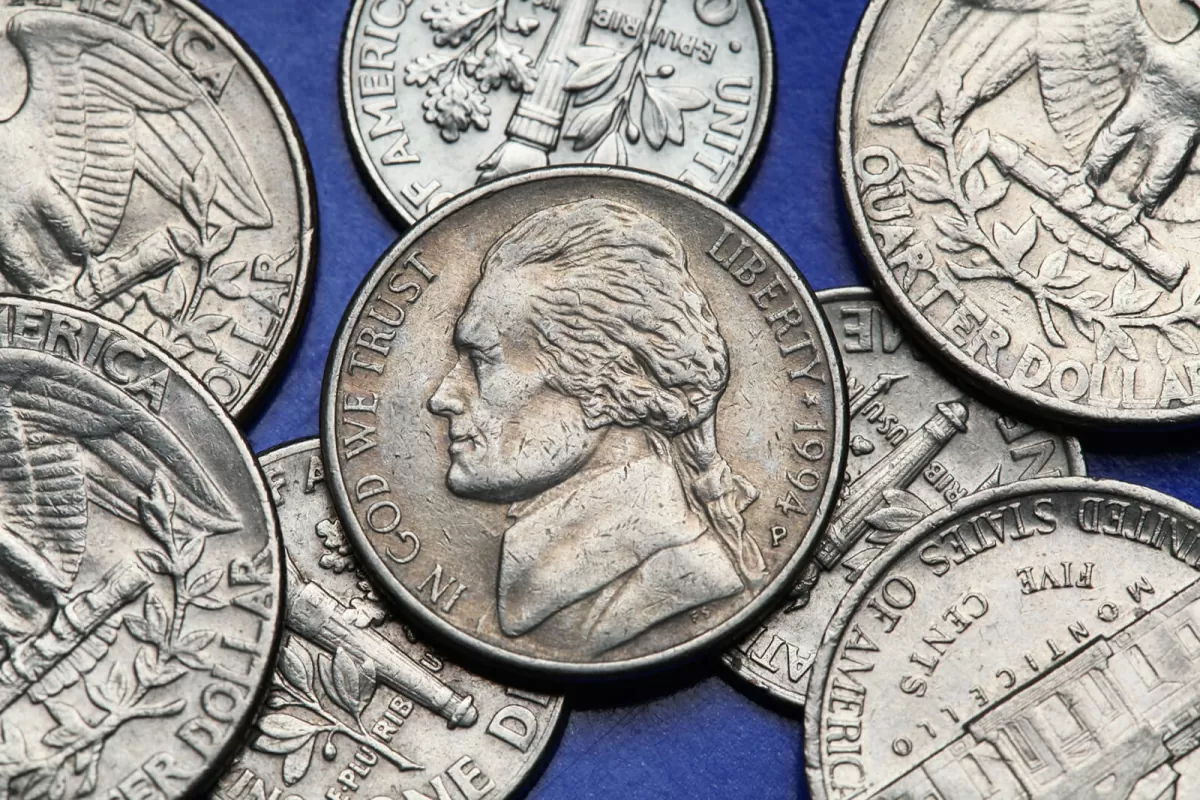
Top 8 Rare Nickels Worth Money in 2025
The rare nickel market offers amazing investment opportunities for collectors in 2025. Valuable nickels keep bringing impressive prices at auctions, and their value has grown over time. Let’s look at eight prized nickels that really stand out in today’s collecting world.
1. 1913 Liberty Head Nickel – $4.5 Million
The 1913 Liberty Head Nickel sits at the top of rare nickels, with just five known specimens in the world. Someone made these unauthorized nickels after the design was officially discontinued. One of these sold for $4.56 million at a Stack’s Bowers auction in 2018. Another brought $3.7 million in 2010, and the Walton specimen went for $4.2 million in 2022. These coins are the crown jewels of American numismatics.
2. 1918/7-D Buffalo Nickel – Overdate Rarity
A fascinating error created this overdate when a die got impressions from both 1917 and 1918 hubs. Collectors found it in 1930, and you can spot the 1918/7-D Buffalo Nickel by its leftward-tilting mint mark. A perfect MS65+ example brought $350,750 in 2016. PCGS has certified about 500 of these, and 20% have earned the special Full Steps designation.
3. 1926-S Buffalo Nickel – Low Mintage
The 1926-S stands out because the mint only made 970,000 coins. You’ll rarely find this coin in higher grades. Experts call it one of the rarest 20th-century coins. One MS65 specimen sold for $149,500, while others have reached $322,000 at auction.
4. 1942 Frith Jefferson Proof – Wartime Silver
This nickel has a misplaced “S” mint mark, making it worth about $175,000. The U.S. Mint started making “silver Wartime nickels” with 35% silver content in October 1942 to save nickel for the military. The “P” mint mark showed up on a U.S. coin for the first time that year, right above Monticello on the back.
5. 1939 Doubled Monticello – DDR Error
The 1939 Doubled Monticello Jefferson Nickel shows clear doubling on “MONTICELLO” and “FIVE CENTS” text. Grading services label this error as FS-801. A perfect MS67 grade example brought $23,500 at Heritage Auction, making it one of the Jefferson series’ most valuable pieces.
6. 1943-P 3 Over 2 – Overdate Error
The Jefferson series has just one overdate – the 1943/2-P nickel. Someone spotted it in 1948, but experts didn’t confirm it until 1977. The “3” in 1943 sits on top of a “2”, creating a sharp hook at the bottom. A PCGS MS67FS example sold for $16,675 in June 2008.
7. 1954-S Jefferson Full Steps – Strike Quality
Finding a 1954-S Jefferson Nickel with Full Steps is like finding a needle in a haystack. PCGS has only certified about 25 examples. Most 1954-S nickels don’t show even one step on Monticello. One collector spent 14 years searching through thousands of bank rolls to find just one Full Steps example.
8. 1974 Double-Struck Nickel – Modern Error
The 1974 Jefferson Nickel Double-Struck error ranks among the best U.S. coin errors. The mint struck this coin twice, and it rotated between strikes. One special piece, still in its original uncirculated mint set, was worth between $15,000 and $17,500 in 2010. Some 1974 nickel errors have earned spots among America’s 100 greatest error coins.
Why Some Famous Nickels Aren’t Worth Much
Coin collectors often face surprising price realities in the numismatic world. Famous nickels don’t always fetch the sky-high prices you might expect when compared to truly rare ones. These coins show us the big difference between being well-known and being genuinely scarce in the collectible coin market.
The 1883 ‘No Cents’ Liberty Nickel
The 1883 ‘No Cents’ Liberty Nickel became famous because of a design flaw rather than its rarity. The coin’s reverse side showed just a “V” without the word “CENTS.” This led some crafty people to gold-plate these nickels and pass them off as $5 gold pieces. People started calling them “racketeer nickels.” It’s a great story, but these coins aren’t worth much today because the U.S. Mint made over 5.4 million of them before fixing the design that same year.
You can buy these nickels for $50-$150 if they’re in great shape. That’s nowhere near the thousands or millions that truly rare nickels can bring. The high number of coins made keeps prices reasonable for most collectors, even with their interesting history.
1936-D 3½ Legs Buffalo Nickel
The 1936-D “3½ Legs” Buffalo Nickel tells us an interesting story about perceived and actual value. One of the buffalo’s legs partly disappeared because someone over-polished the die. Collectors first thought this was a rare error. But research showed it was just a worn die variety, not a true mint error.
The biggest problem with this variety is authentication. Many fake examples exist because people alter regular 1936-D nickels. Real ones usually sell for $500-$1,000 in average condition. That’s much less than what you’d pay for truly scarce buffalo nickels from other years.
Market recognition vs. actual value
A coin’s fame and its market value don’t always match up. Several things determine a nickel’s true value beyond just being famous:
- Certified population reports – Coins with fewer certified examples tend to cost more than common varieties, no matter how famous they are.
- Condition rarity – Some nickels might be easy to find in worn condition but very rare in mint state, especially when they have full steps or horn details.
- Collector demand – The number of collectors looking for specific varieties can drive prices up more than actual scarcity.
A nickel’s value comes from the perfect mix of genuine scarcity, collector interest, and condition. Many famous varieties leave sellers disappointed because everyone thinks they’re rarer than they really are.
Buffalo Nickels: A Collector’s Favorite
Buffalo nickels stand among the most captivating designs in American coinage. These five-cent pieces have charmed both numismatists and casual hobbyists since 1913 with their historical value and artistic beauty.
Why Buffalo nickels are so popular
The coin’s distinctly American imagery makes it special. James Earle Fraser’s design captures our nation’s frontier spirit perfectly. He created a Native American chief’s portrait on one side and an American bison on the other. These artistic elements make the coins beautiful beyond their cash value.
These nickels hold a special place in American culture. They represent the last truly American coin designs before presidential portraits took over our money. Collectors love them as pieces of American heritage that tell the story of a crucial time in our nation’s past.
The coins are a great way to get started in collecting. Beginners can afford common circulated pieces, while serious collectors can invest in pristine uncirculated examples.
Design flaws that increase rarity
The Buffalo nickel’s technical flaws ended up creating some of the series’ most valuable pieces. The date on the raised part of the design wore away quickly as the coins changed hands. This makes well-dated specimens from certain years rare treasures today.
Strike quality changed a lot throughout the series. The high-relief design often left coins weakly struck, especially at certain mints. The buffalo’s horn detail often looked unclear, which is why collectors pay top dollar for “Full Horn” examples with complete detail.
The core dies wore out faster than expected. This created many die varieties and errors that collectors are happy to find today.
Key years to look for
Here are some Buffalo nickels that bring premium prices:
- The 1914-D and 1921-S are the most important condition rarities, particularly in higher grades
- You’ll rarely find 1924-S and 1926-S coins with strong strikes
- The 1937-D 3-legged variety (missing one leg from die polishing) remains one of the most wanted error coins in American numismatics
San Francisco (S) and Denver (D) mint coins usually cost more than Philadelphia issues. They had lower mintages and poorer strikes. Even common date Buffalo nickels in excellent condition can be worth good money, especially with full horn detail and bright surfaces.
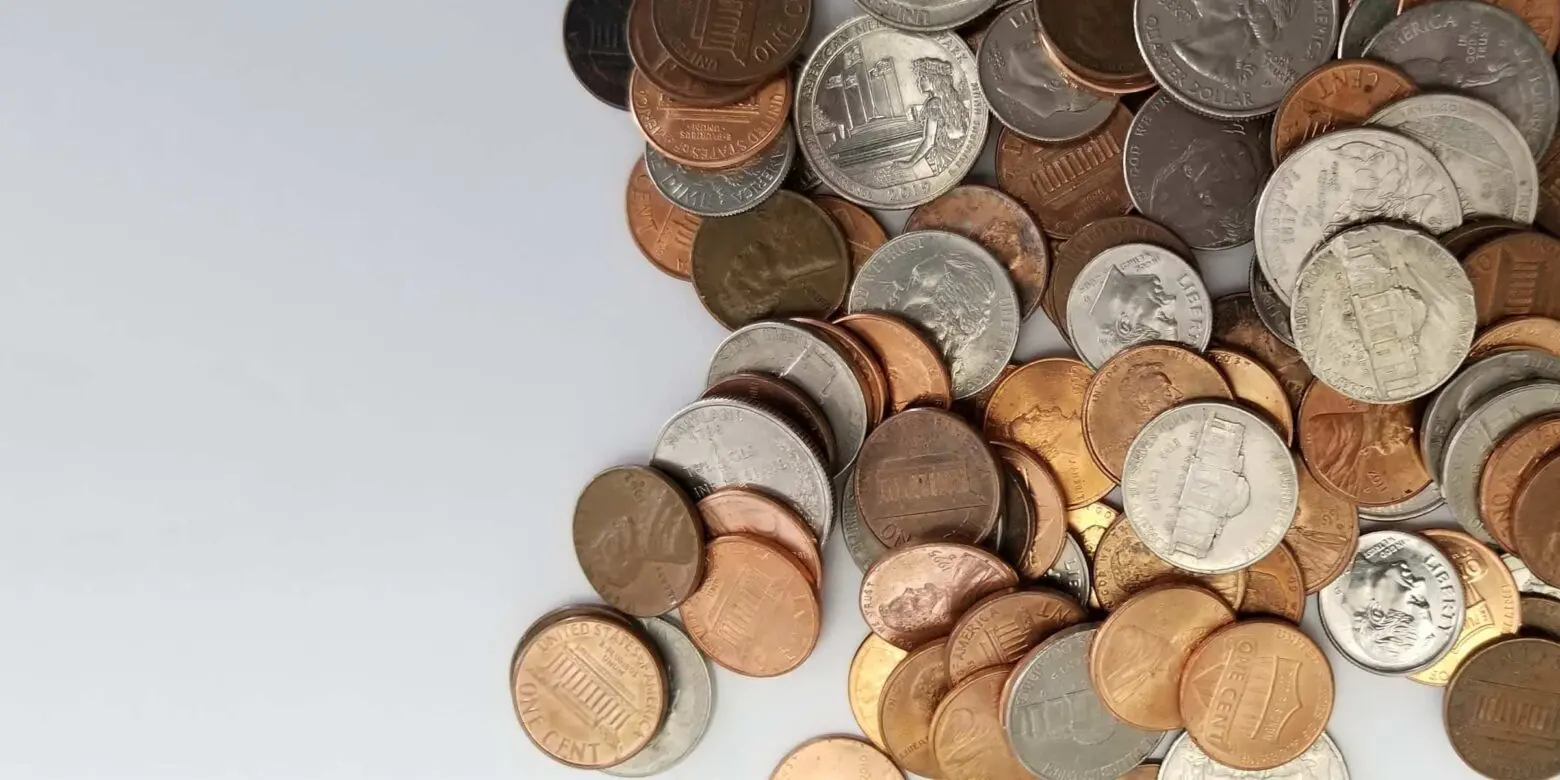
Jefferson Nickels Worth Money
Jefferson nickels have been around since 1938 and present surprising investment opportunities to collectors who know what makes these nickels valuable. These coins are still available and hide treasures that smart collectors can spot, unlike their Buffalo predecessors.
What makes Full Steps so valuable
“Full Steps” is a premium grading designation that shows at least five complete steps at Monticello’s base on the reverse. This feature increases a coin’s value because most Jefferson nickels show weak striking at this location. The steps area looks weak because it sits directly opposite Jefferson’s hair on the obverse, which “steals” metal during striking.
PCGS and NGC both use “FS” to designate Full Steps nickels, but only for coins graded MS60 or higher. NGC makes a distinction between “5FS” and “6FS” based on visible steps. Some dates rarely show Full Steps, which makes them worth big premiums:
- The 1953-S and 1954-S are legendary rarities with Full Steps and sell for five-figure prices
- Modern issues like the 1968-D in MS64 FS have sold for $2,450 though they seem common
- All but one of these dates from the 1960s, including 1968-D, 1969-D, and 1970-D, are nearly impossible to find with Full Steps
Key dates and mint marks
Some Jefferson nickels stand out as particularly valuable whatever their step detail:
- 1939-D: Only 3,514,000 were minted, making it worth $60-$130 in MS60+ condition
- 1942-D with D over Horizontal D: Collectors pay $1,500-$10,000 in MS60+ condition
- 1943-P 3 over 2: This overdate error shows a “3” struck over a “2” and sold for $16,675 in MS67FS
- 1950-D: The lowest regular mintage in the series at just 2,530,030 coins
Error varieties like the 1939 Doubled Monticello, 1943-P Doubled Eye, and 1945-P Doubled Die Reverse command high premiums.
Wartime silver nickels (1942–1945)
World War II created one of the most collectible Jefferson nickel subsets. The Japanese attack on Pearl Harbor made nickel a vital material for armor plating and artillery. Congress authorized a composition change on October 8, 1942.
These “War Nickels” contain 35% silver, 56% copper, and 9% manganese instead of the standard 75% copper/25% nickel. You can spot these wartime nickels by their large mint marks (P, D, or S) above Monticello’s dome. This marked the first time the “P” mintmark appeared on U.S. coinage.
Each war nickel contains 0.056 troy ounces of silver, making them worth more than face value when silver prices exceed $1.00 per troy ounce. Collectors often pay $20-$50 or more for uncirculated specimens with Full Steps.
Tips for Identifying Valuable Nickels
Finding valuable nickels takes knowledge and the right way to check them. Your everyday pocket change might hide treasures that many people miss.
Check for mint marks and errors
Mint marks tell you where coins were made and often show how rare they are. Jefferson nickels from 1938-1964 have mint marks next to Monticello on the back. The marks moved to the front below the date in 1968. The “P” mint mark first showed up on silver war nickels during World War II (1942-1945). You should look carefully for error varieties like die cracks that can add $20-$30 to a nickel’s value. Die chips, doubled dies, and strike-through errors are what collectors want most.
Use a magnifier to spot doubling
You need good magnification to spot valuable doubled die varieties. Most collectors use a 5x-10x loupe to check coins quickly. Subtle doubling can be hard to spot, so experienced coin experts suggest using a 10x magnifier when you check possible doubled dies. Serious collectors use 40x magnification with LED lights to see tiny details like split serifs and repunched mint marks. The best doubled dies show clear shadow effects on letters, dates, or design elements.
Understand coin grading basics
The 70-point Sheldon Scale grades coins, with higher numbers showing better condition. Most collectible nickels fit these grades:
- MS65-70: Choice to perfect uncirculated coins that look exceptional
- MS60-64: Uncirculated coins with different amounts of contact marks
- AU50-58: About Uncirculated with slight wear on high points
- XF40-45: Very Fine with light wear but clear details
Use price guides and auction records
Before you buy or sell valuable nickels, check professional price guides from PCGS or NGC. These services grade coins in a standard way that helps protect against fakes. Recent auction results are a great way to get current market values. PCGS, NGC, and ANACS give third-party authentication and grading, which you need for valuable coins.
Summing all up
Valuable nickels keep drawing new and seasoned collectors alike in 2025. These regular-looking coins might be worth a lot more than you’d think – whether they’re in your pocket change, coin jars, or family collections. Buffalo nickels work well for collectors at any budget level and can bring great returns, especially with key dates like the 1926-S or the well-known 1937-D 3-legged variety.
Jefferson nickels with Full Steps designation give collectors another promising path. The 1950-D’s low mintage makes it really special, along with the wartime silver issues from 1942-1945. Manufacturing mistakes can turn into numismatic gold – just look at the 1974 Double-Struck Nickel that’s worth thousands today.
You need to know what you’re looking at to spot valuable nickels. A good magnifying glass helps you see doubling, die cracks, and other valuable quirks that most people miss. Your success as a collector depends on knowing mint marks, composition changes, and grade differences.
Smart collectors should get third-party authentication for their valuable pieces and check reliable price guides before big purchases. The rare nickel market moves up and down based on collector interest, certified populations, and condition rarity – not just fame or hype.
Both casual collectors and curious people should take a closer look at their nickels. A hidden treasure might be sitting in your change right now. Nickel collecting brings together the excitement of discovery and the chance to make money. Those five-cent pieces in your pocket today could turn into something much bigger tomorrow.
Here are some FAQs about what are the rare nickels worth money:
What years of nickels are worth money?
Several years of nickels are worth money, particularly rare dates and mint marks. Buffalo nickels worth money include the 1913-S Type 2 and 1926-S, while key date Jefferson nickels worth money feature the 1939-D, 1942-D, and 1950-D. Collectors also seek what year nickels are worth money like the 1942-1945 silver “war nickels” that contain 35% silver.
Is a nickel 5 cents?
Yes, a nickel is the United States coin worth exactly 5 cents in face value. While most nickels worth money are only valued at their 5-cent denomination, certain rare dates and mint marks can be worth substantially more. Even among what nickels are worth money, their legal tender value remains five cents unless they possess collector value.
How much is a nickel in money?
In terms of face value, a nickel is worth 5 cents in U.S. currency. However, certain nickels worth money can be valued much higher to collectors – some buffalo nickels worth money can sell for hundreds or even thousands of dollars. The actual market value of Jefferson nickels worth money depends on factors like rarity, condition, and mint mark.
Is there a nickel that’s worth a lot of money?
Yes, there are several nickels worth money that can be extremely valuable to collectors. The 1913 Liberty Head nickel is famously valuable, with one selling for over $4 million, while certain buffalo nickels worth money like the 1918/7-D overdate can fetch thousands. Even some Jefferson nickels worth money from specific years and mint marks command premium prices.
How do I know if my nickel is valuable?
To determine if you have nickels worth money, examine the date, mint mark, and condition carefully. Key indicators for what nickels are worth money include rare dates (like 1950-D Jefferson nickels), mint errors, or special designs (such as buffalo nickels worth money). Consulting a coin price guide or professional appraiser can help identify valuable specimens among what year nickels are worth money.
Why is the 2009 nickel rare?
The 2009 nickel is considered rare because the U.S. Mint produced significantly fewer nickels that year due to the economic recession. While not all 2009 nickels worth money are extremely valuable, the low mintage makes them more collectible than other modern Jefferson nickels worth money. The 2009-D nickel is particularly scarce among nickels worth money from that year.
Why do we call them nickels?
We call them nickels because the coin was originally made primarily from nickel metal when first introduced in 1866. Even though modern nickels worth money are actually 75% copper and only 25% nickel, the name stuck. The term distinguishes these coins from other denominations, whether referring to common circulation pieces or rare buffalo nickels worth money.


